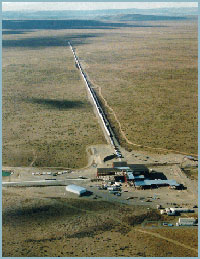| Background
. . . .

|
Warning:
To use the interactive grapher, please open in the latest version of Chrome, Firefox, or Safari, and have JavaScript enabled. |
|
|
Significance
Many
different physical phenomena may be measured by their wave
motion. Perhaps the best known examples are those of radio waves,
television waves or microwaves. Indeed, radio
stations are named for their types of wave transmission. For an
AM station, the amplitude of the wave is varied to carry
different sounds. An FM station has its frequency
modified. Thus, AM stands for amplitude modulation
and FM represents frequency modulation.
The
difference may be illustrated using the sliders on the above graphic.
|
|
Observation:
Any book on
trigonometry will have these two, much studied functions.
However, in the physical sciences where math is often applied, the sine
function, or cosine function may be "squared." The x
value often represents time and the y value, i.e., the
function value, is the periodic signal being studied.
In the case that the
sine or cosine function is "squared," the student may recognize
this as being similar to the "piecewise" function, or "step"
function studied in earlier algebra courses.
The more advanced
student will also recognize the function as an expanded Fourier series
with a periodic cycle.
|


Students will recognize a familiar
piecewise function from Pre-calculus
can easily be applied to time and a time
function.
|
|
Links and Printed References
|
| Animated Unit Circle
< ..//unit/unit.htm
> |
| Another animated Unit
Circle < ..//sine/sine.htm
> |
| Square Functions and other
Fourier applications for the advanced student. See < http://www.falstad.com/mathphysics.html
>. |
John Johnson,
Jr., "COLUMN ONE: Gravity's Field of Dreams," Los
Angeles Times, June 10, 2006, p. 1.
|
| Donald A. McQuarrie, MATHEMATICAL
METHODS for Scientists and Engineers, University Science
Books, Sausalito, CA, ISBN 1-891389-24-6, 2003. |
|
Waves on a Cosmic Scale
Waves and wave
equations have significance far beyond the mathematics of the trig
classroom. In fact, the study of gravitational waves is currently
one of the largest projects in experimental physics in the United
States. The project is called LIGO for Laser
Interferometer Gravitational Wave Observatory. In order to
collect good data, a minimum of two large facilities had to be
built. One is in the State of Washington, and the other in
Louisiana.
LIGO Hanford Observatory,
Washington
California Institute of Technology
LIGO Livingston Observatory,
Louisiana
Massachusetts Institute of Technology
LIGO Animations of gravitational
waves <http://www.ligo.caltech.edu/LIGO_web/aaas0203/
>.
To view the animations you must
have RealPlayer
or RealOne Player installed on your computer. You can download a
free copy at < http://www.real.com
>. The link to download is located on the upper right hand
corner
of the page labeled as "free RealOne Player". Once you have
successfully
installed the player you can visit the LIGO website. Click on the
"animations" link and select the appropriate speed that applies to your
internet connection. Most campuses use a LAN connection.
For more information please see LIGO
:
< http://www.ligo.org
>
2016 Update:
Gravitational waves, as predicted by Einstein, occur as objects
accelerate or decelerate through space. LIGO appears to have
observed the collision of two black holes though the event lasted only
20 milliseconds. Naturally scientists are double checking their
data which is also the first observation of a black-hole merger.
Exciting!
|
Update 2017
 Photo courtesy of Caltech,
Pasadena, CA.
Photo courtesy of Caltech,
Pasadena, CA.
Rainer Weiss, Barry C. Barish, and Kip S. Thorne won the 2017 Nobel Prize in physics for the LIGO gravitational wave experiments.
|

|
Matthew Nelson
Jonathan Liu
Mahan Hajianpour
Summer 2003
|
Jonathan Sahagun
JavaScript Update
Summer 2018
|
|